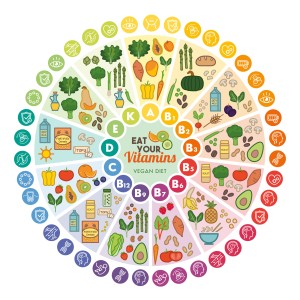As the heart is one of our hardest working organs so it makes sense to look after it as much as possible. The risk of heart disease increases with age but, unfortunately, problems can start much earlier and may not always make themselves known.
So, this World Heart Day make now the time to be kind to your heart.
Clinical nutritionist Suzie Sawyer shares five foods to help support your heart health.
Beetroot
Beetroot is often referred to as a super food because it delivers so many amazing health benefits. It is especially high in antioxidants which help protect the artery wall from damaging free radicals. However, it’s also been discovered that beetroot contains specific plant compounds with anti-inflammatory effects. Certain types of heart disease such as atherosclerosis are characterised by chronic inflammation and beetroot can help to reduce the risks associated with it. Furthermore, beetroot juice has been found to help lower blood pressure.
Even better, beetroot is delicious either in sweet or savoury dishes, and makes a wonderful addition to any tray of roasted veggies.
Salmon
Salmon and all oily fish including sardines and mackerel contain the essential omega-3 fats that are known to protect the heart and also encourage healthy blood flow through the veins. They also have wonderful anti-inflammatory benefits which will have a positive effect on the health of the arteries.
Whilst smoked salmon does contain a high level of salt, it’s still rich in omega-3s so is great for a Sunday morning treat with your scrambled eggs!
Tomatoes
Tomatoes are actually one of the most researched of all fruits and vegetables in relation to heart health. Indeed, much research has looked at the ability of tomatoes to reduce overall cholesterol levels and also raise protective HDL levels. Plus, tomatoes are high in antioxidants, specifically carotenoids, which protect the artery wall from plaques that can cause damage if left unchecked.
Even better, tomatoes are very easy to include into the daily diet. They are actually more powerful when cooked so they make a great start to the day, grilled with some avocado on toast or added to a wealth of pasta, soups, roasted veggies or one-pot dishes.
Garlic
Often regarded by naturopaths as a miracle food because of its ability to combat so many different illnesses, it’s also great for heart health. Garlic can help lower blood pressure, reduce cholesterol levels and also raise HDL levels. In higher amounts, it can also help break down blood clots.
So many savoury dishes benefit from some added garlic, especially stir-fries, soups, curries, veggie sides, lamb and fish dishes.
Oats
Oats are another super food when it comes to heart health. Specifically, they contain a form of soluble fibre known as beta glucan which has been strongly linked to improving cholesterol levels. It can reduce both cholesterol and other blood fat levels. Whilst beta glucans can also be found in other whole grains such as wheat and barley, oats are the best source. Plus, they are naturally lower in gluten, so less likely to cause digestive issues.
To put it bluntly, cholesterol has to be removed from the body via the stool, hence having healthy bowels is essential. Soluble fibre naturally binds to cholesterol with bile from the liver and transports it safely out of the body.
With the winter months now approaching, it’s a great opportunity to make porridge your go-to breakfast. Add some delicious berries (from frozen is fine), a little natural yoghurt and you’ve got the perfect start to the day. Make sure you’re eating whole grain oats though, as the level of fibre is much reduced in the ready-made porridge sachets.
So, why not try some of these easy wins when it comes to your heart health?
Stay well.
FOR MORE GREAT DIET AND LIFESTYLE ADVICE:
Sign up to receive our blog and get a weekly dose of the latest nutrition, health and wellness advice direct to your inbox.
Follow us on Twitter @feelaliveuk for nutrition, lifestyle and well-being tips.
Visit us at www.feelaliveuk.com for the latest offers and exclusive Alive! content.
Follow and Chat with Suzie on Twitter @nutritionsuzie
For everything you need to know about vitamins, minerals and herbs visit our sister site Herbfacts
All images: Shutterstock






























